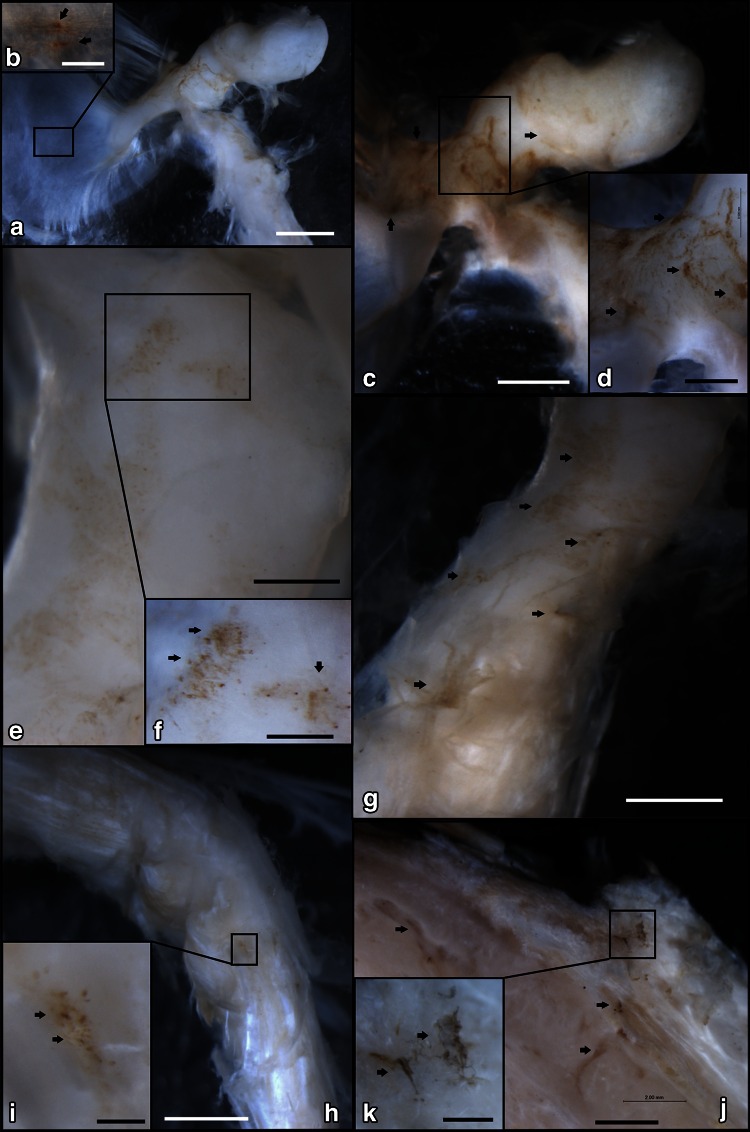Fig. 2.
The distribution of Substance P-immunoreactive nerve fibers (SP-IR NFs) in the inner surface region of the middle ear shown by immunohistochemical staining at the macroscopic level. a SP-IR NFs were found in the inner surface of the TM and malleus by anti-Substance P immunohistochemical reactions (76-year-old, female) (bar 2 mm). b Higher magnification of the square in a. SP-IR NFs (arrows) were sparsely distributed on the TM (bar 0.25 mm). c Higher magnification of neck of the malleus (see Fig. a) (bar 1 mm). d Higher magnification of the square in c. Numerous SP-IR NFs (arrows) were clearly observed (bar = 0.5 mm). e The insertion site of the TTM on the malleus (see Fig. 1) (bar 0.5 mm); f Higher magnification of the square in e. Mesh-like structures of Substance P immunoreactivity (arrows) were clearly observed (bar 0.25 mm). g The belly of the TTM (see Fig. 1). A few SP-IR NFs (arrows) were sparsely distributed on the TTM (bar 1 mm). h The connection site between the TTM and the TVPM (see Fig. 1) (bar 2 mm); i higher magnification of the square in h. A mesh-like structure of Substance P immunoreactivity (arrows) was observed (bar 0.25 mm). j The belly of the TVPM (see Fig. 1) (bar 2 mm); k Higher magnification of the square in j. A mesh-like structure or fibers of Substance P immunoreactivity (arrows) was observed (bar 0.5 mm)

